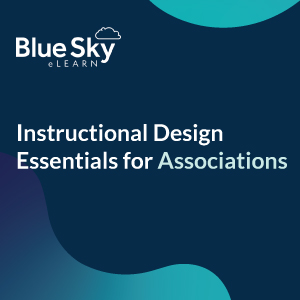
Training as a Product: How to Systemize Your Creative Decision Making
If you’ve ever taken a tour through the headquarters of a major manufacturing company – like Nike, Tesla or Apple – one thing becomes very apparent:
Their product and customer are at the center of everything they do.
All systems, processes, and functions are designed with one goal in mind: Improve the customer’s relationship with the product.
This principle manifests in many ways. These organizations have…
• Entire departments devoted to researching the needs of the marketplace
• Consultants and process-improvement experts who figure out how to develop the product faster and more efficiently
• Marketing teams that demonstrate the product’s features and benefits to the target audience
• Development and design teams that collaborate to create and iterate on the product
• Deployment squads who devise the most effective ways to put the product into the hands of the customers
… and much, much more – all devoted to strengthening the product while making the customer experience as positive as possible.
The entire organization is symbiotic. When customer expectations change, the product changes and each department changes along with it. Everything works in tandem. Which is why each creative decision – every new or updated product – must be vetted and tested before an organization commits to it.
It comes down to this: Companies like Nike, Tesla, and Apple don’t have the time or resources for arbitrary decision-making. They have processes in place to ensure every product is useful, marketable and in-demand.
Why should your training development process be any different? The training you create, after all, is a product. It has customers. It has a development cost. It even has a brand. (If you don’t believe that, ask your colleagues how they feel about mandatory compliance training, then watch all the enthusiasm drain from their faces).
Why, then, do so many instructional design teams rely on arbitrary creative decisions? They spend time pondering PowerPoint templates and in-class seating arrangements, but nobody asks the questions…
“How is this training building consumer advocacy? How is it strengthening our organization’s brand? How should it be marketed? What’s the most economical and impactful way to deliver it to learners?”
Why is your latest training program held in a classroom instead of online? Is it the right thing for your learners and your organization, or was it just the easiest type of training to design?
Why do you have an entire suite of e-learning devoted to topics that won’t benefit most employees? Is it because these topics create the biggest impact on your organization? Or is it because your go-to SME specialized in these areas, and you have to make something before your deliverable deadline, so…?
Here’s a better question. How can you avoid arbitrary design decisions in the future?
The answer is simple. Copy the models that already exist. Take a page from someone else’s playbook. Start treating your training as a product… because it is a product.
What does that look like?
FIRST, UNDERSTAND YOUR ORGANIZATIONAL GOAL: Nike doesn’t make computers. Apple doesn’t make shoes. Why? Because those products don’t fit either company’s respective brands or goals, a lesson worth remembering. Before sitting down to create any training, external or internal, make sure it will meet your organization’s goals and principles – and your learners’ expectations.
THEN, EXPLORE YOUR OPTIONS: You want to create a training program that, makes other training development needs easier or renders them obsolete. How do you identify this kind of program? Legwork. List every type of training that links back to your organization’s ultimate goal, and then think critically about each of your options. There’s no shortcut here. It’s just good old-fashioned brainstorming.
FINALLY, PICK AN ECONOMICAL DEPLOYMENT MECHANISM: Pick a deployment mechanism that supports the potential impact of the learning solution. For example, don’t spend a fortune on a state-of-the-art, HTML5-based, fully-responsive e-learning program if you’re training people to replace the cartridge in the printer. It has almost no effect on your bottom line, and because of its low-impact potential, it shouldn’t be over-designed or over-deployed.
When the organizational goal, the learning solution, and the deployment mechanism are aligned, those arbitrary creative decisions disappear. Suddenly, you know exactly which training program drives you closer to your goals and values, which means you know exactly who it’s being designed for, which means you know exactly what your learners can gain from it, which means you know exactly how to market it to them.
It’s symbiotic. When you systemize creative decision making, every action becomes interdependent. It serves a greater goal. This synergetic approach helps manufacturers make stronger, more effective products, and it can help you create meaningful training.
Because, at its heart, all training is product development.
About Cristina Naso:
Cristina is a director and learning strategist for the American Association for Physician Leadership. She has more than 15 years of experience designing superlative and marketable curriculum tailored to her learners – ranging from in-class instruction to e-learning, to video games, and more.
About Erik Sabol:
Erik is a writer and designer for the American Association for Physician Leadership. He’s a former journalist and a published fiction author and has used his storytelling experience to create immersive and focused learning solutions for thousands of people all over the world.
Want to hear more? Don’t miss Cristina and Erik at this year’s Learnapalooza. Learnapalooza is a three-day conference taking plan on October 16-18 created just for the education and learning associaiton professional. Attend and benefits as 11 of the association community’s experts on training and education share trends, topics, and topics you can use immediately to reach next-level success with everything from content to pricing and LMS selection. Hurry! Register today!


